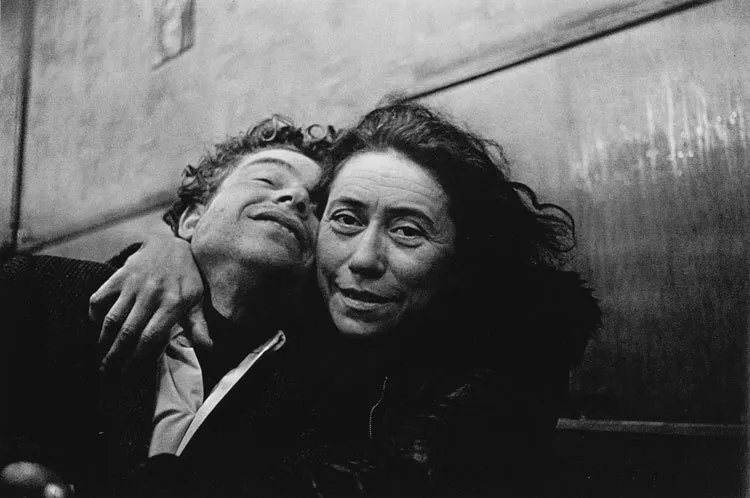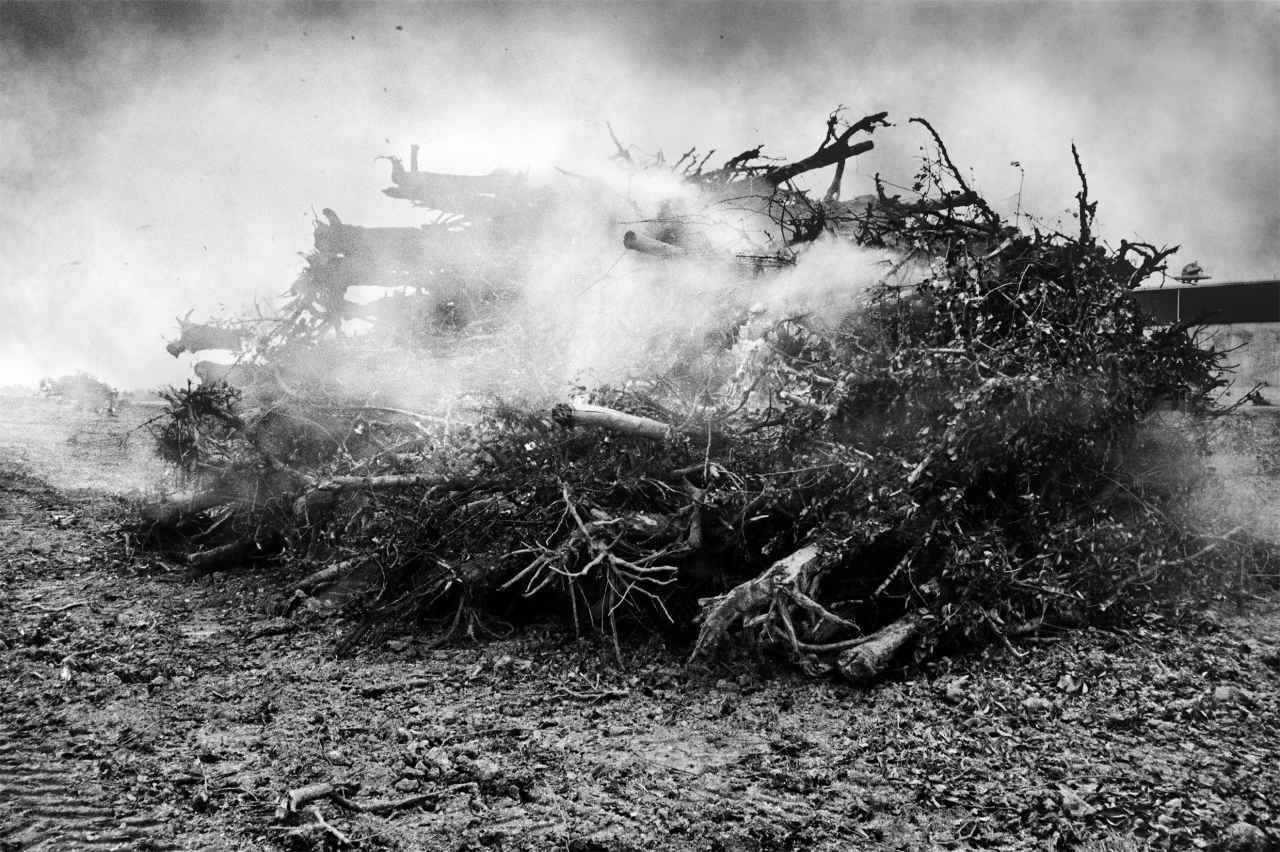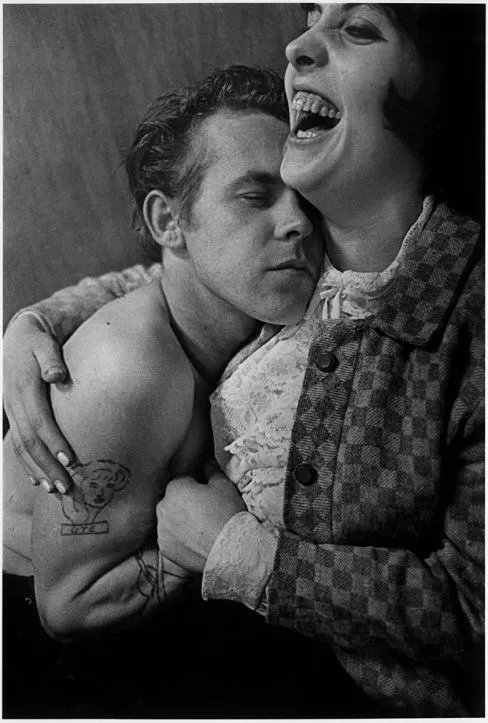Anders Petersen
"To be close to life, you have to be close to yourself."
Within the extensive and multifaceted landscape of documentary photography, Anders Petersen stands as a titan whose work defies categorization. The Swedish photographer has amassed a lifetime of images that plunge into the depths of human emotion and social complexity.
Early Life and Career
Anders Petersen was born in 1944 in Solna, Sweden. Early on, he gained an interest in photography but took an unconventional route, opting to teach himself the art rather than pursue formal education. His big break came with the project "Café Lehmitz," in which he documented the lives of the patrons of a café in Hamburg’s red-light district. The series debuted in the early 1970s and quickly garnered him international attention.
Photographic Style and Techniques
Petersen's unique style lies in his ability to capture the unvarnished truth of human existence. His photographs often veer toward the surreal, capturing moments that transcend the ordinary while revealing deeply intimate facets of his subjects. Typically shot in black and white, his images are raw, emotive, and startlingly honest.
To achieve this, Petersen often uses natural light, allowing the ambient conditions to dictate the mood of his shots. His close-up compositions make for stark portraits that feel both invasive and vulnerable, capturing a wide range of human experiences from joy to despair. His willingness to immerse himself into the lives of his subjects separates him from many of his contemporaries, granting his images a deeply personal aura.
Career Highlights
While "Café Lehmitz" is often considered the cornerstone of his career, Petersen's oeuvre extends far beyond that seminal work. His photo books include "City Diary," "From Back Home," and "SoHo," each contributing to his reputation as a master storyteller. He has also been awarded several prestigious prizes, including the Leica Oskar Barnack Award and the Special Book Award from Rencontres d'Arles. His exhibitions have graced many international venues, including the Moderna Museet in Stockholm and the Museum of Modern Art in New York.
Photography Gear
When it comes to equipment, Petersen prefers to keep it simple. Throughout his career, he has often relied on the Leica M series—specifically, the M2 and M4 models. These rangefinder cameras are compact and unobtrusive, perfect for capturing candid moments without alarming subjects. Petersen pairs these bodies with a 28mm or 35mm lens, which allows for a wide field of view without distorting the subject, aiding in his intimately framed compositions.
PHOTOGRAPHY BOOKS
"Anders Petersen: Stockholm" encapsulates a four-year journey where the photographer dives deep into the urban and emotional landscape of Stockholm. What sets this work apart is its focus on everyday life as well as moments of celebration, capturing the city's pulse through black-and-white imagery. The sheer breadth of subjects—from snowy streets to operating theatres—makes it invaluable for photographers interested in urban photography. Notably, this is Petersen's first detailed portrait of Stockholm, despite his extensive career photographing various other settings like psychiatric hospitals and prisons.
In a similar vein but more comprehensive is "Anders Petersen", which serves as the largest monograph of Petersen's work to date. This book spans his career, showcasing over 250 of his most iconic photos. While exhibitions may be transient, this book argues that photobooks have a lasting dignity, suggesting that photographers will find the collected work a continuous source of inspiration. Petersen's sentiment on the longevity and impact of photobooks adds a layer of depth, making it a must-read for those interested in the craft of long-form photo storytelling.
Taking a detour from cityscapes, "Café Lehmitz" zooms in on an iconic bar in Hamburg's red-light district. This is a cornerstone in Petersen's career, and the new edition includes a foreword by musician and actor Tom Waits. Petersen captures the grit and character of the bar's patrons in stark black and white, marking it as a classic in photojournalism. The work has been so impactful that it even influenced Tom Waits' legendary album "Rain Dogs." This book serves as a lesson in intimate, analog photojournalism, teaching how to engage subjects authentically.
"Anders Petersen: Rome" offers an intimate look at the eternal city, a subject revisited by Petersen several times since the mid-1980s. What makes this book particularly unique is its personal touch, opening with portraits of Petersen’s lover, Julia. This human element serves as a pathway into the broader cityscape. The book is not just a geographical exploration but also a temporal one; Petersen compares his recent photographs with those taken seven years earlier, inviting photographers to consider the impact of time on their work.
All these volumes offer different facets of Petersen's artistic journey, providing aspiring photographers ample room for study—be it in mastering the nuances of black-and-white photography, learning to capture the essence of urban spaces, or understanding the narrative power of a well-curated photobook.
Quotes
"To be close to life, you have to be close to yourself." — Anders Petersen
"For me, the photograph is a statement, a punctuation in the poem called 'Life.'" — Anders Petersen
"The distance to the subject is often the same as the distance to myself." — Anders Petersen
"Emotion is the ultimate form of truth." — Anders Petersen
"Photography is a journey into the complexities of the human condition." — Anders Petersen
Legacy and Influence
To talk about Petersen's influence is to discuss the very fabric of modern documentary photography. He has encouraged countless photographers to explore the fringes of society and to take an unflinchingly intimate look at the human condition. While many photographers venture into the realm of intimate documentary work, Petersen's influence remains subtle yet profound.
For those looking for an inspiration in documentary photography. Diane Arbus' work is notably similar in its focus on marginalized individuals and societal outliers. On another yet equally captivating front, the war photography of James Nachtwey offers a kind of visceral intimacy that mirrors the emotional depth of Petersen's work, although their subject matter may differ.
Anders Petersen's lifelong endeavor to capture the soul of humanity has made him a living legend in the world of documentary photography. Through his work, we are offered a raw look at the complex interplay of human emotions and the beauty that lies within the chaos of everyday life. And that, undoubtedly, will be his lasting legacy.























Donec id justo non metus auctor commodo ut quis enim. Mauris fringilla dolor vel condimentum imperdiet.